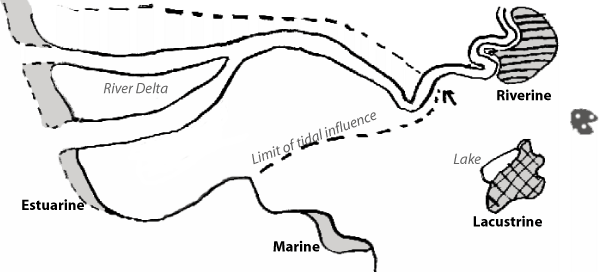|
The location of a wetland tells you approximately the source of water, and thus its mineral and nutrient levels. There are five categories. They are marine, estuarine, riverine, lacustrine and palustrine. Marine wetlands are areas influenced by tidal water. They are located in very shallow coastlines that are NOT in estuaries of rivers. Estuarine wetlands occur in areas where tidal and river water mix. Wetlands that are inundated by tidal water are classified in this category. These wetlands are flooded partially or completely by tidal water during high tides. During low tides, freshwater becomes the main source of water. Riverine wetlands are wetlands along river channels. Unlike estuarine counterparts, riverine wetlands are not influenced by tidal water. Therefore, they are usually further upstream. They are important functions in flood control measures. Riverine wetlands are usually flooded naturally or artificially to reduce the volume of water flowing downstream. Lacustrine wetlands occur at the margins of shallow lakes. Palustrine wetlands describe all the freshwater wetlands which fail to qualify for the above mentioned categories.
|
